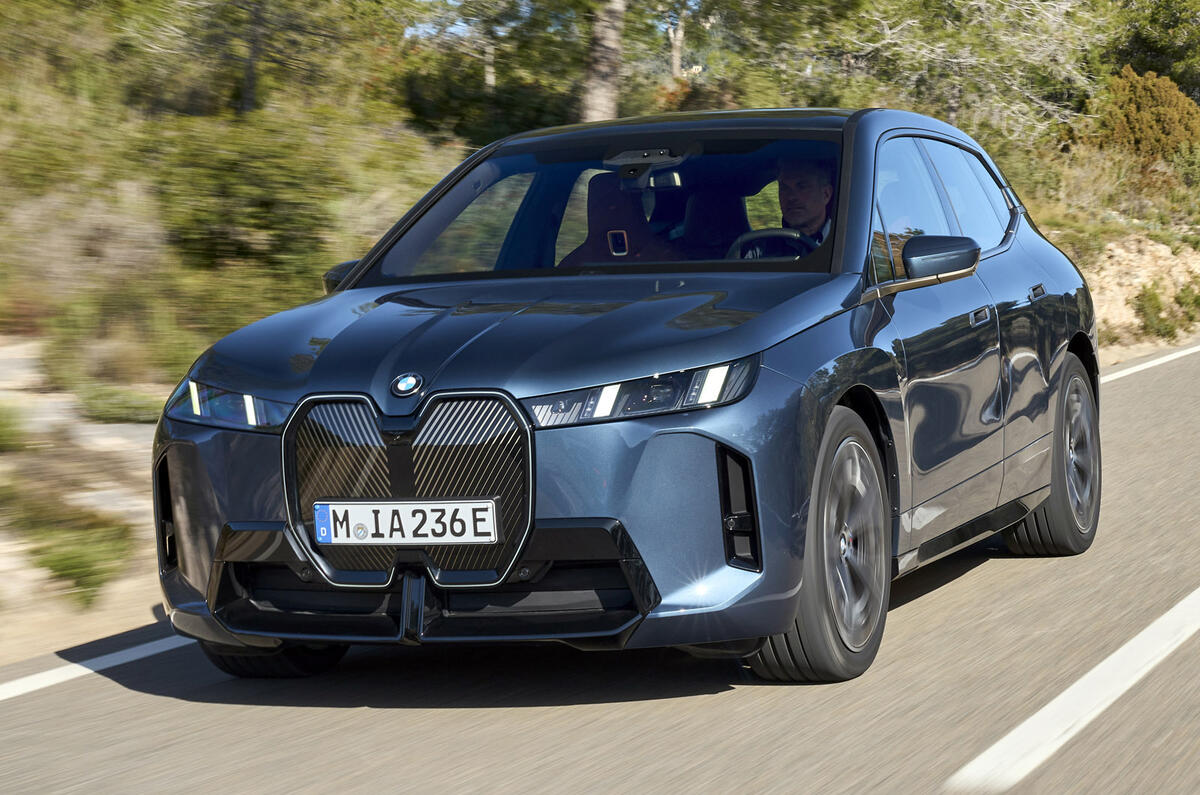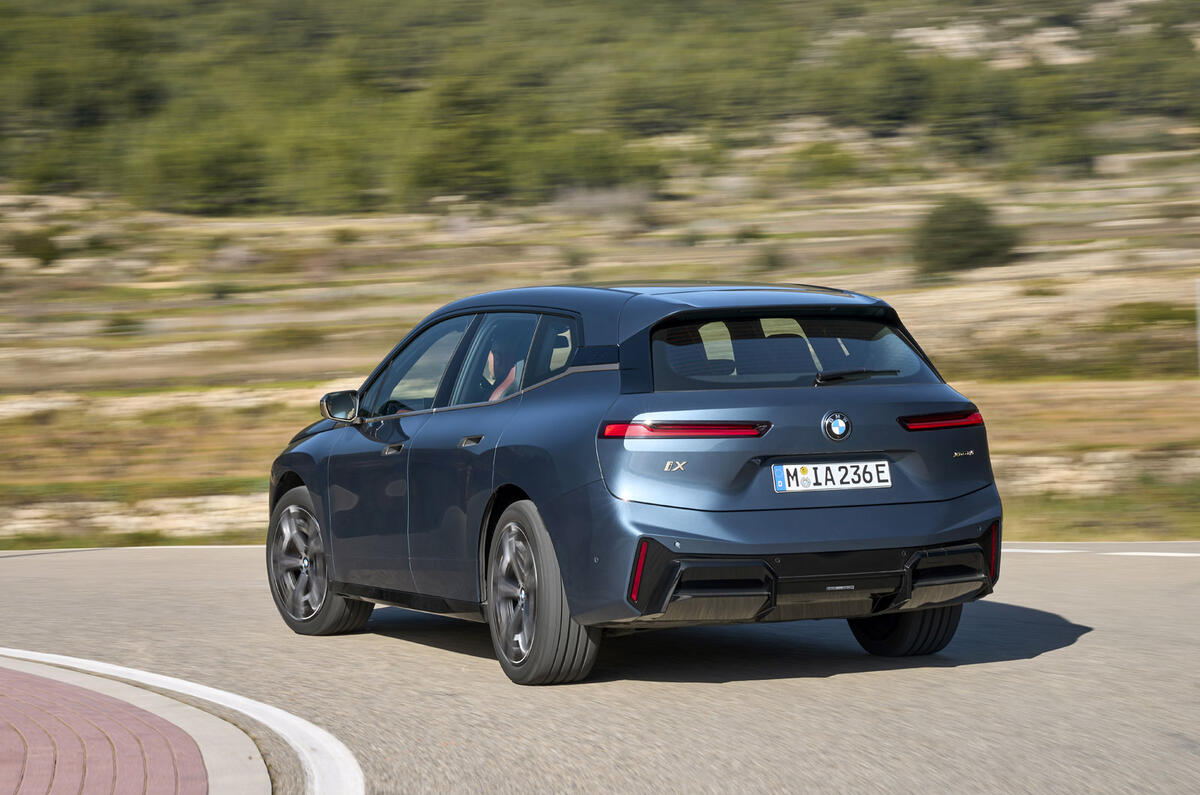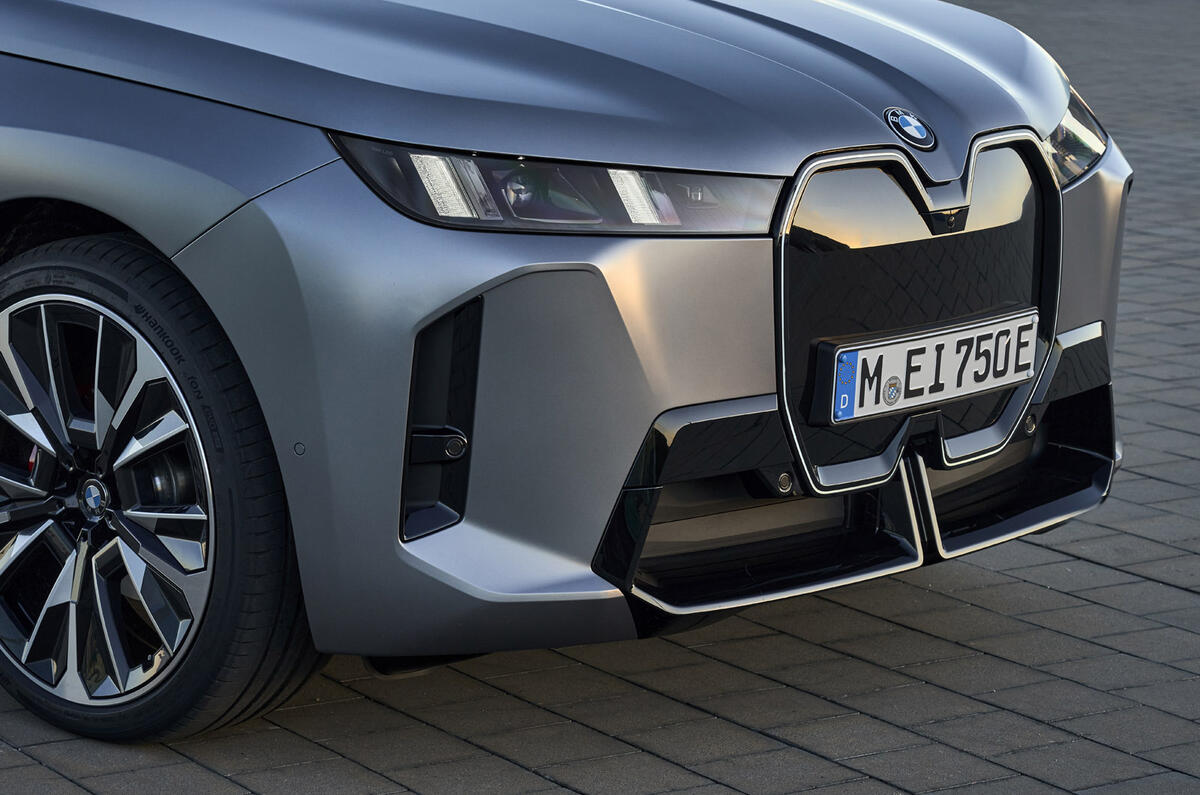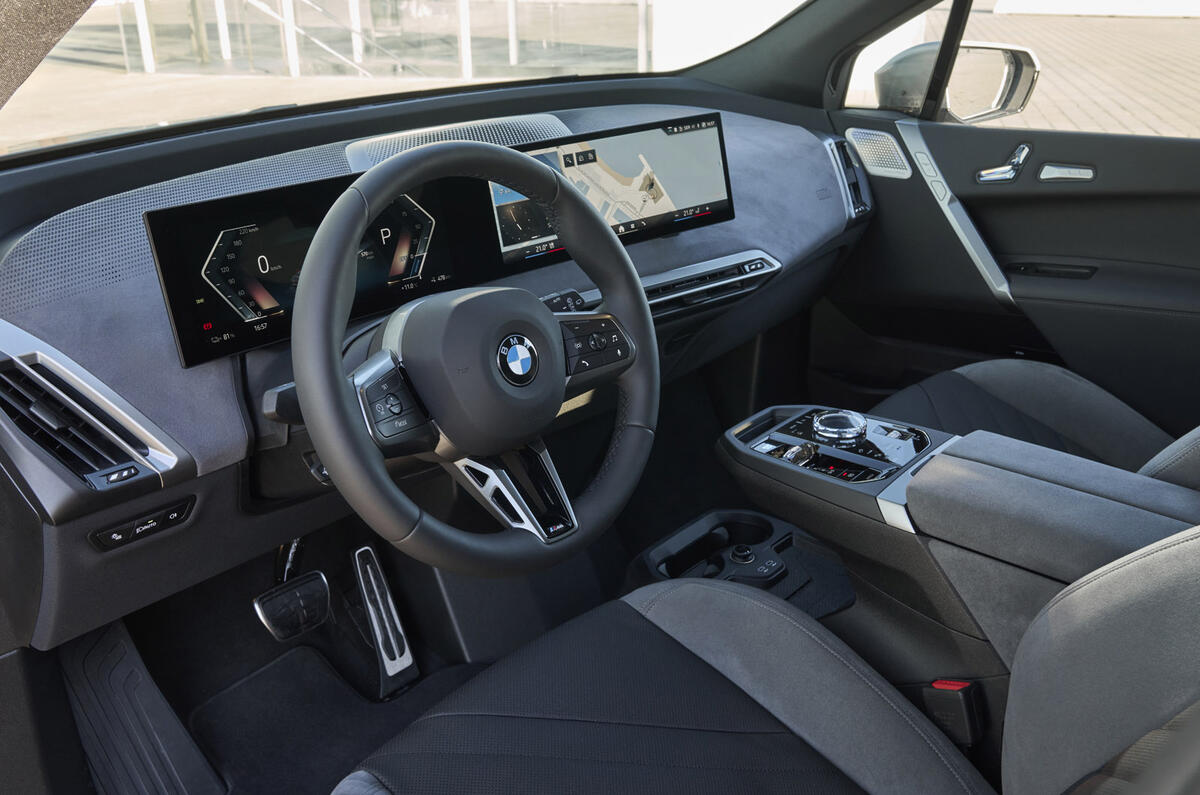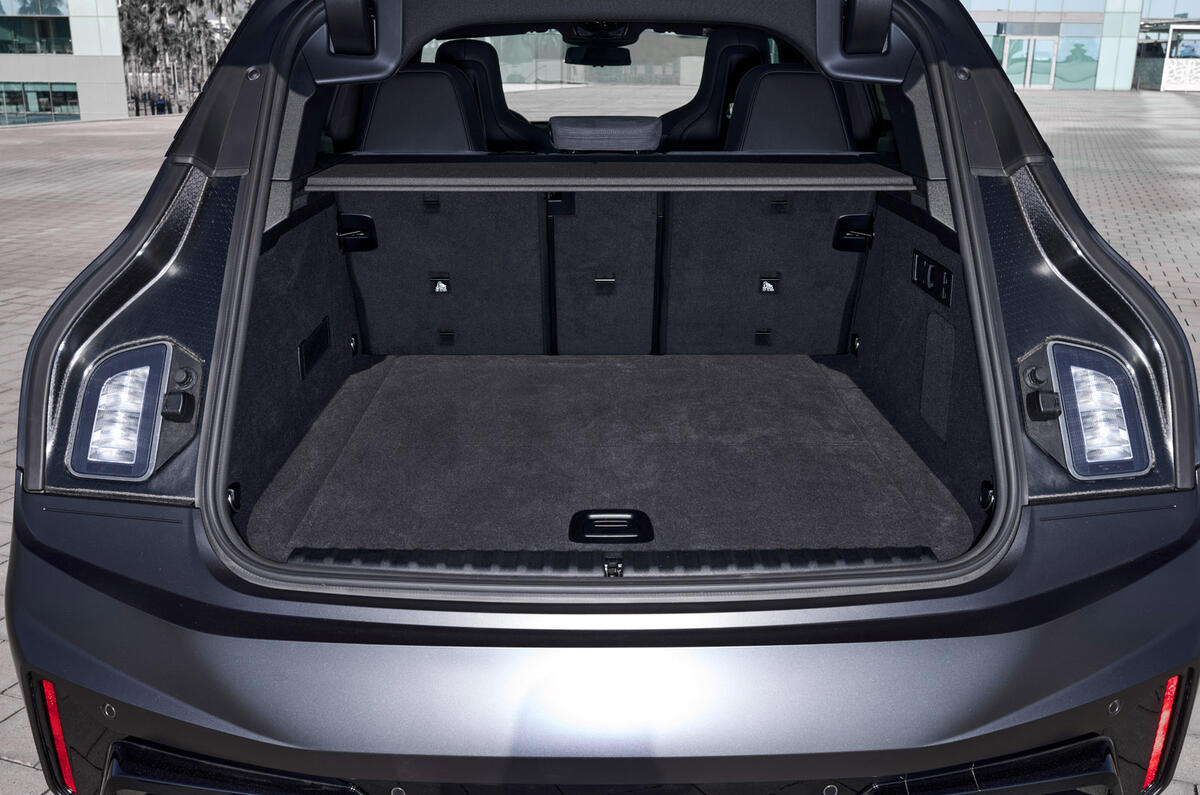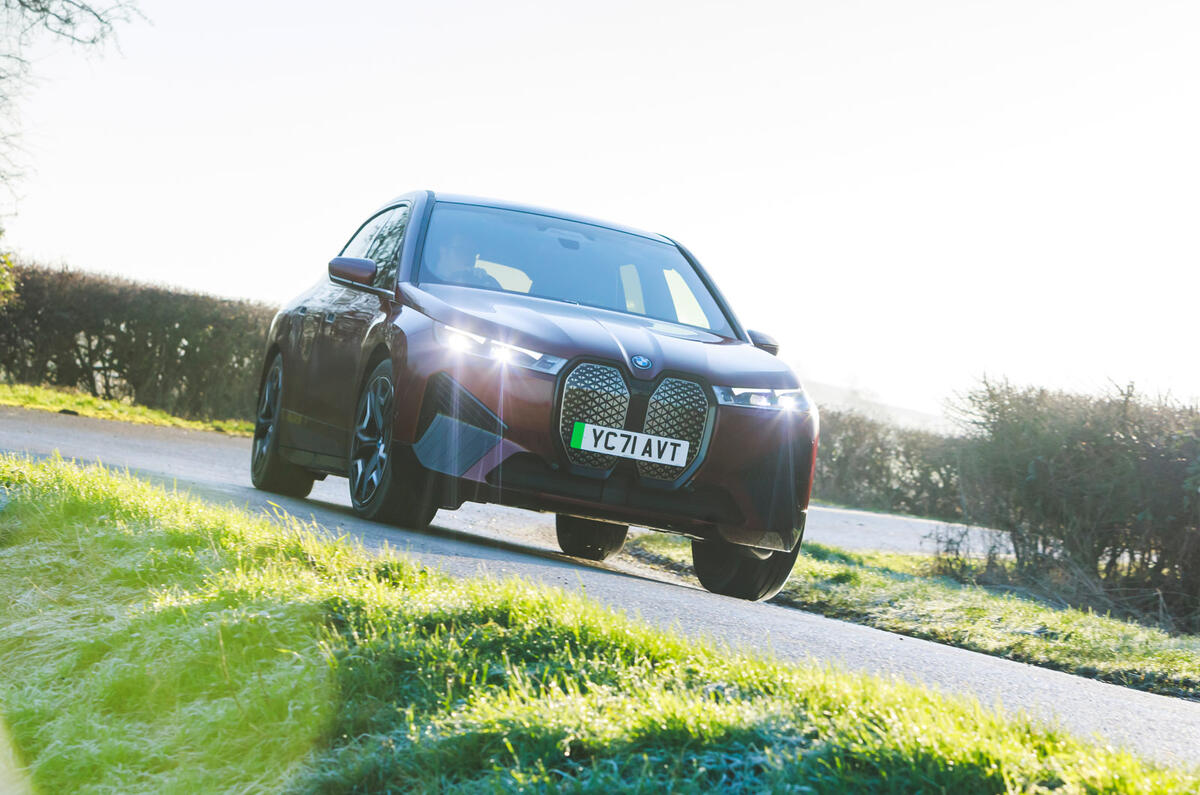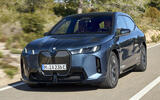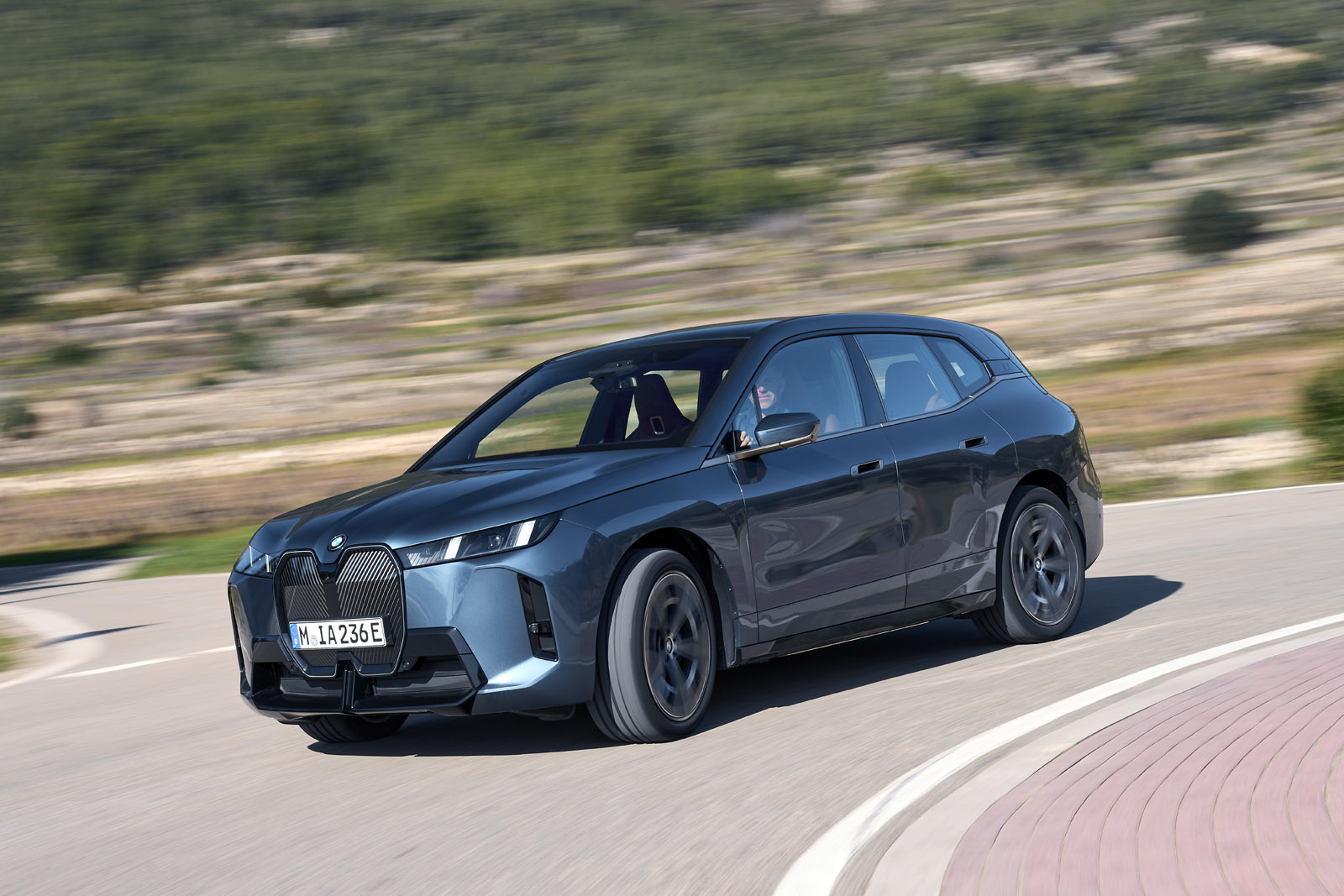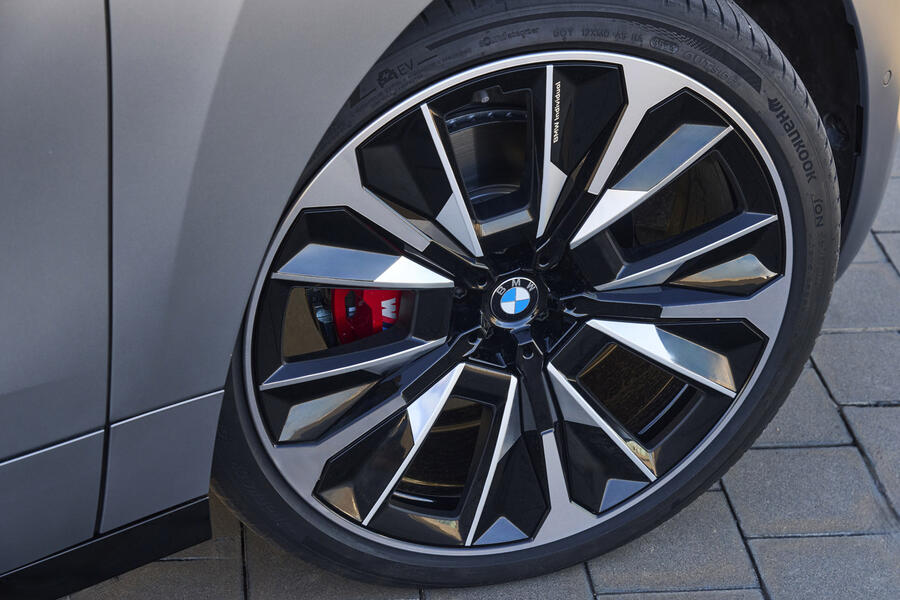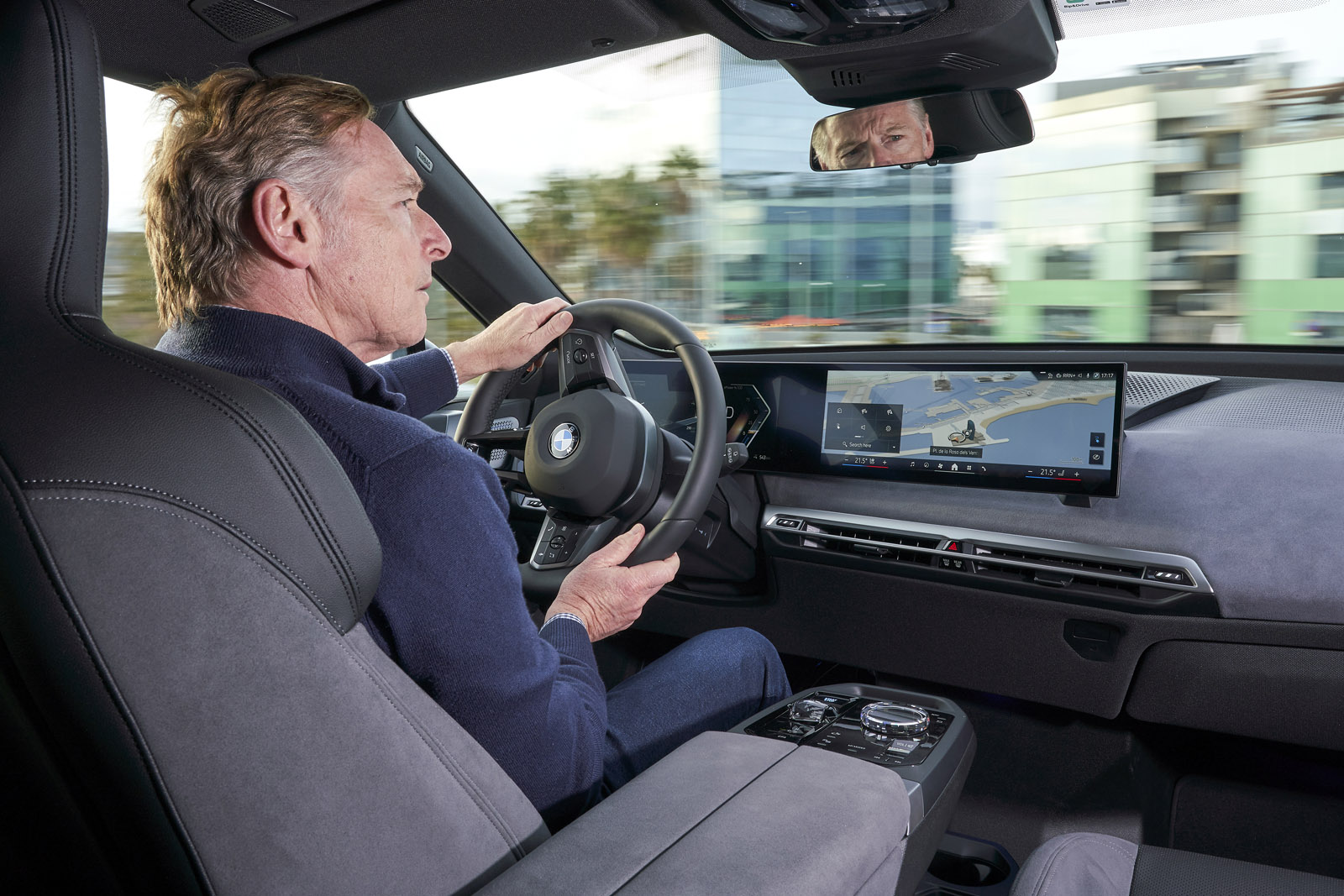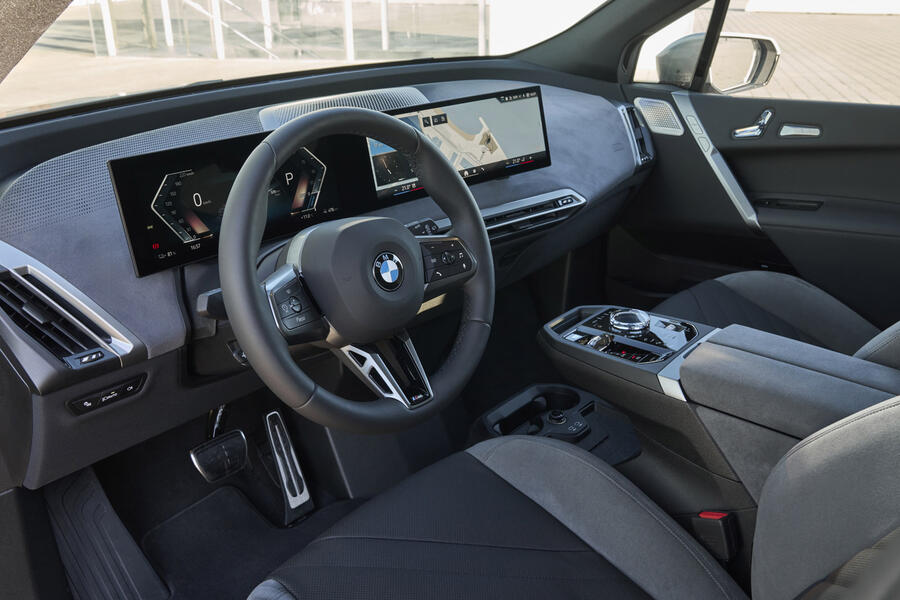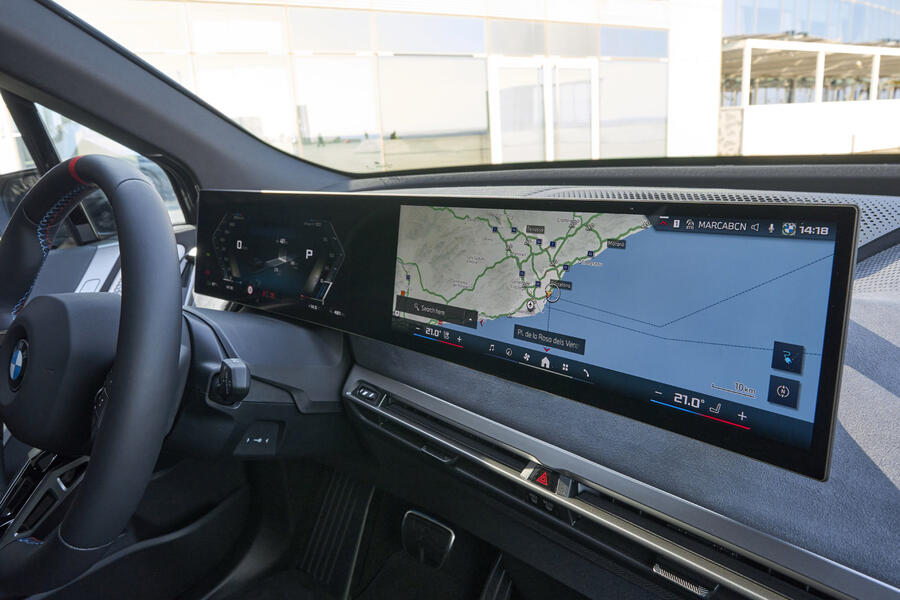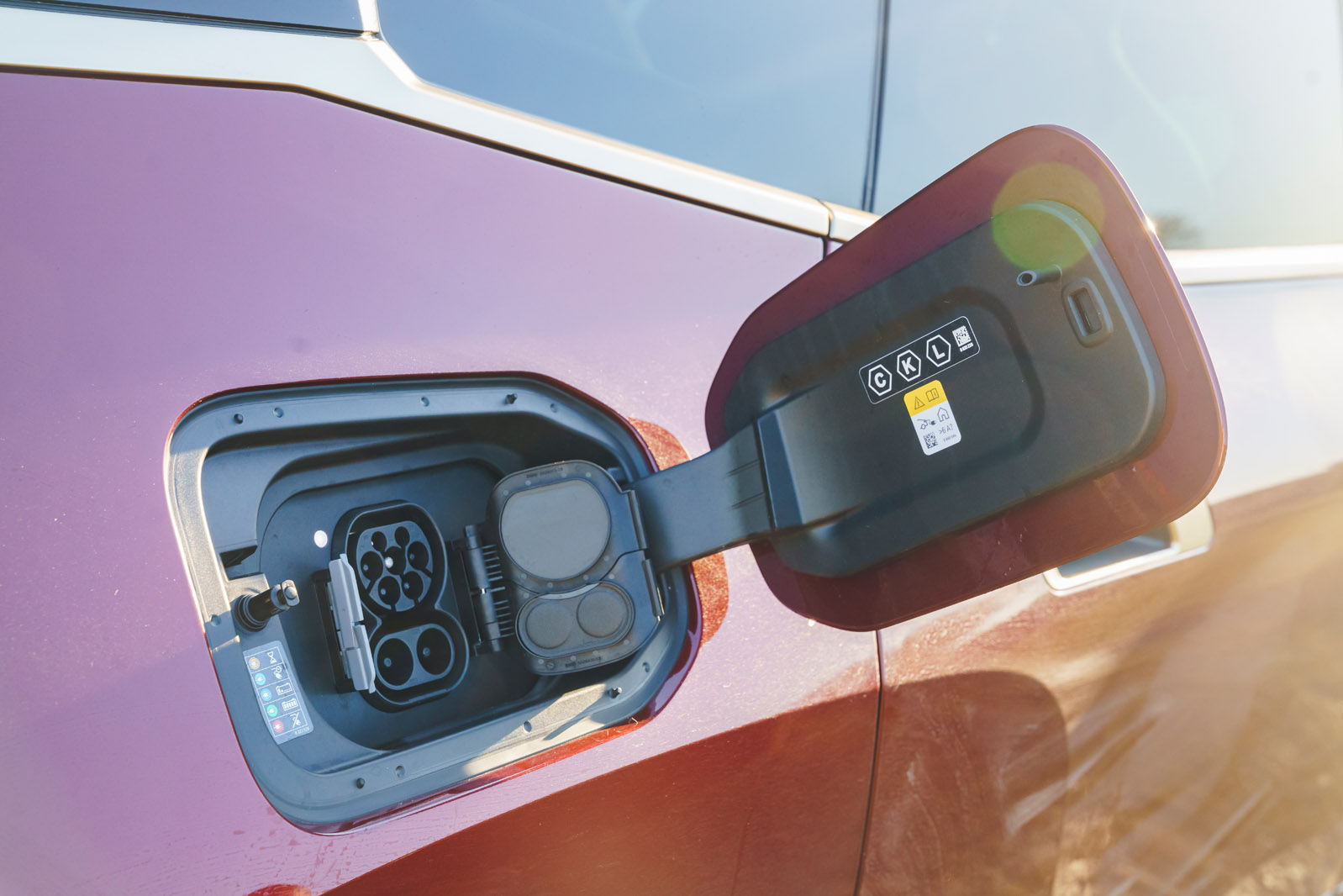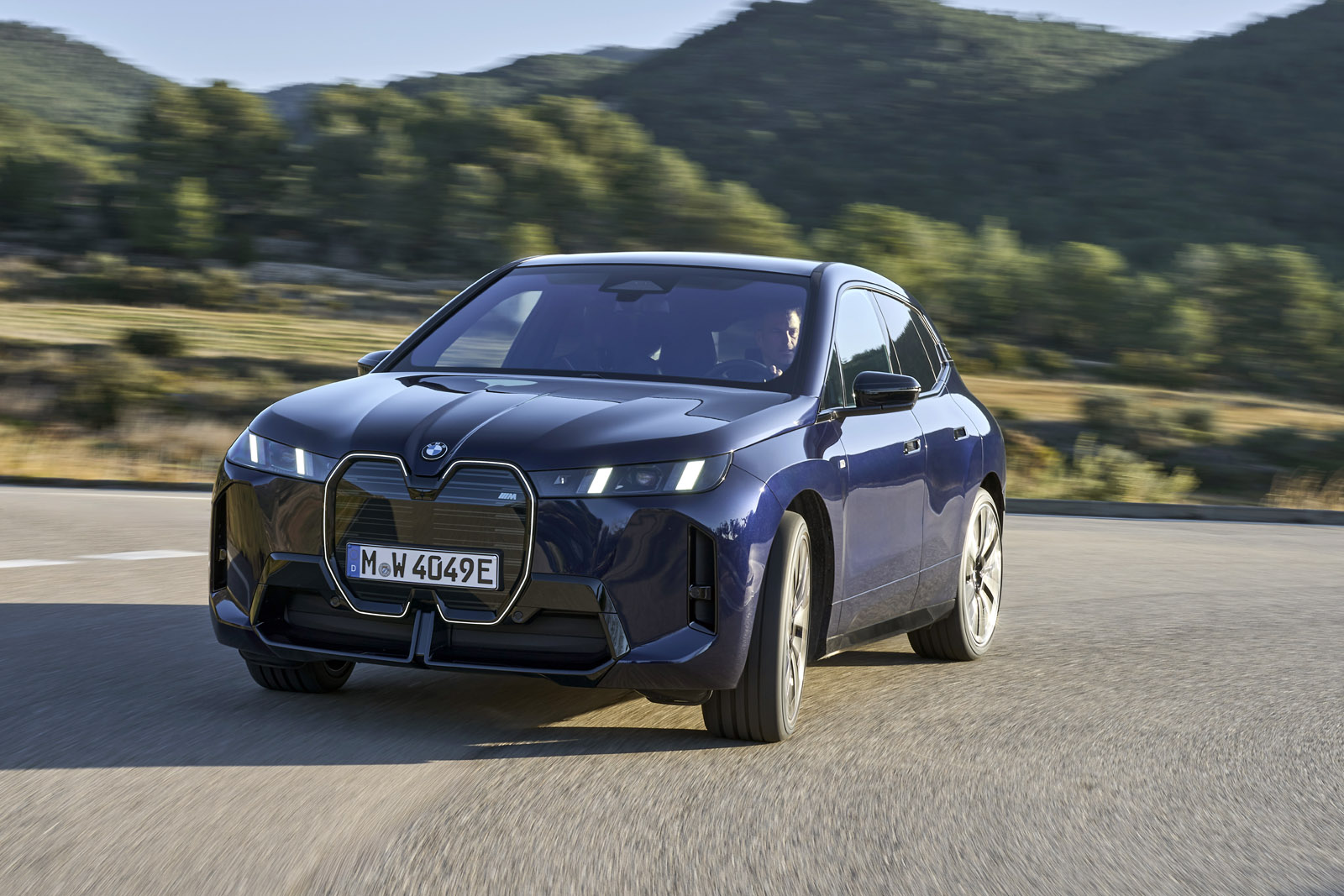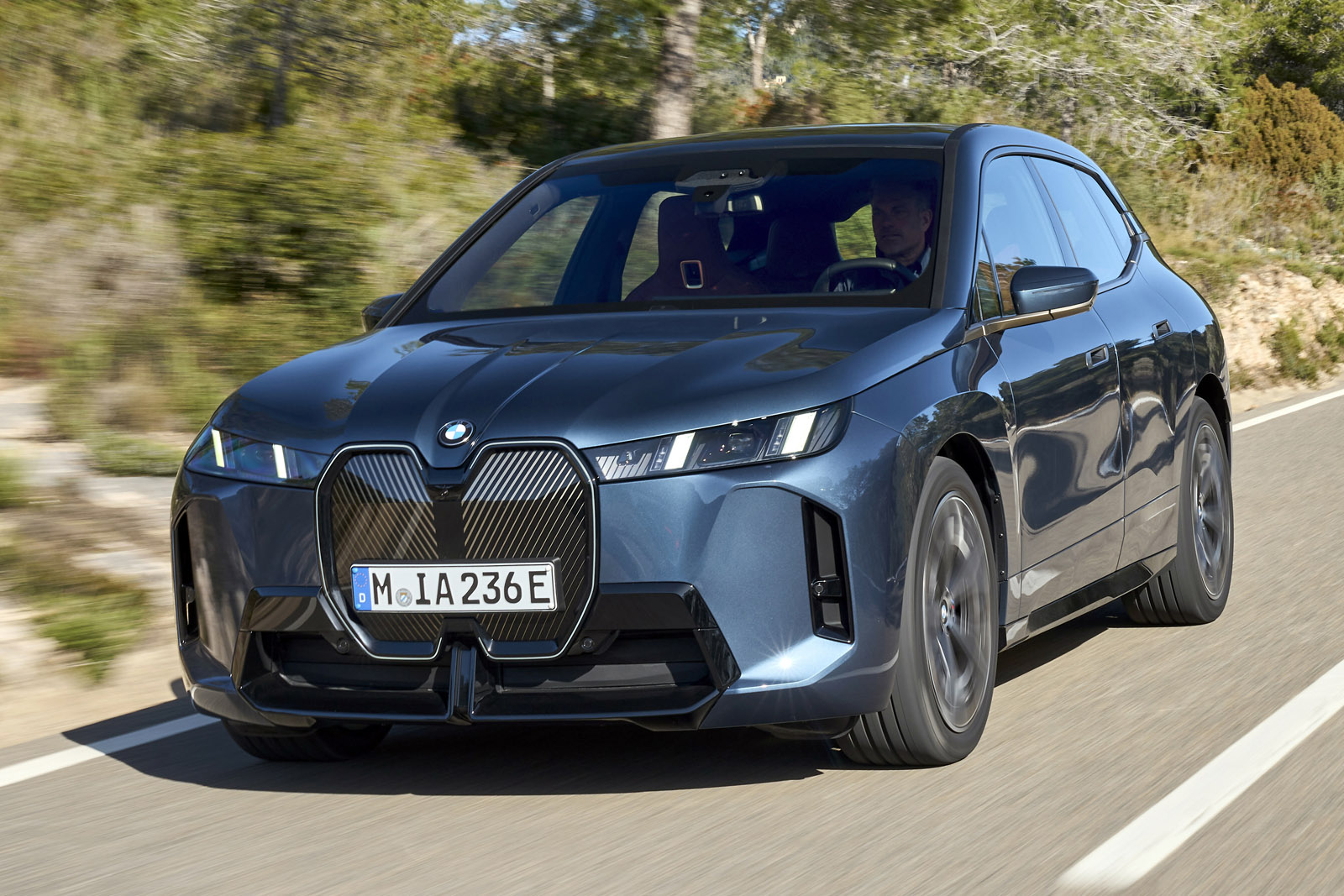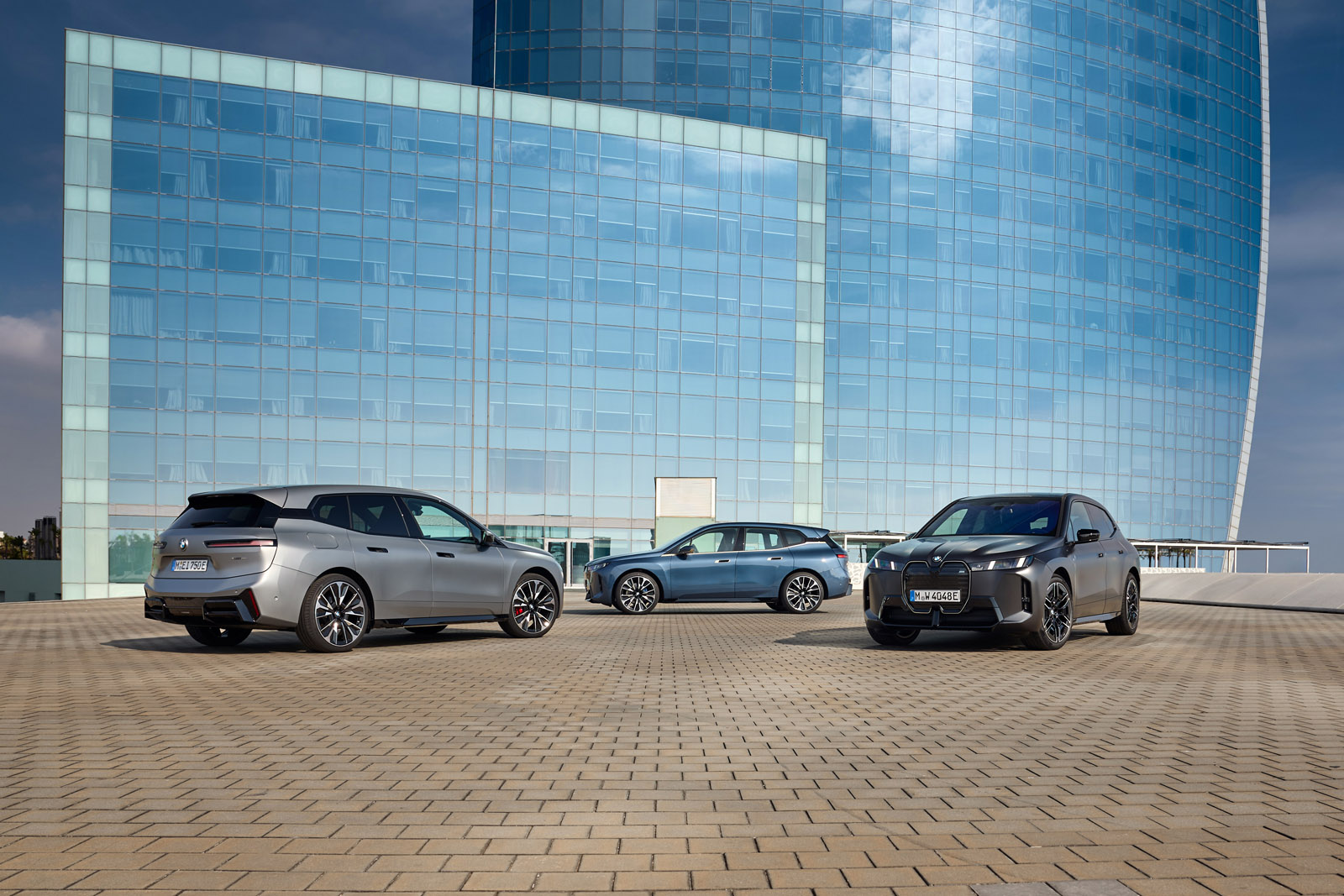It’s not the car’s greatest dynamic strength, though, and its sheer size and preference for wide lanes and smoother surfaces means you have to pick your moments to go looking for it.
For the updated M70, BMW’s M division has tuned the air springs, adaptive dampers and anti-roll bars, keeping the car’s considerable mass impressively in check and its engagement suitably high. The uniquely calibrated four-wheel drive system delivers a rear-biased feel, adding agility and playfulness that sets it apart from other iXs. No, it’s not an M4 CSL in terms of handling fluidity, but for a luxury electric SUV its dynamic ability is quite remarkable.
Ride comfort and isolation
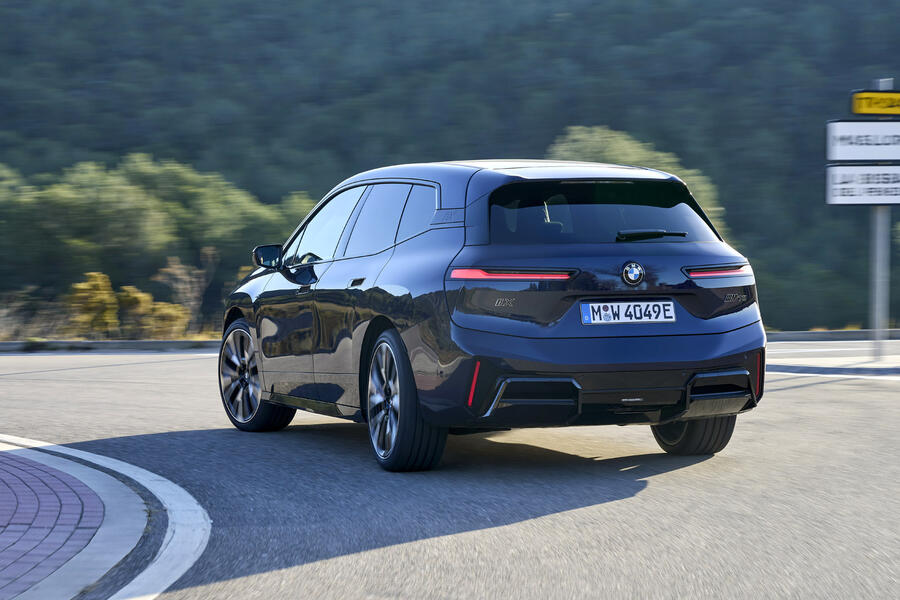
This is where the iX really excels. So it should, you might think, as a luxury car with no combustion engine to rumble or vibrate, as well as big wheel arches to help quell road noise, and air suspension (optional pre-facelift, standard on the rear axle post-facelift) to smooth over bumps. But many high-end EVs have failed to bring really revolutionary rolling refinement to the table over the past decade, for one reason or another. The iX nails its potential, and then some.
Even though our test car rode on 22in alloy wheels, it admitted just 58dBA of ride and wind noise into its cabin at a 50mph cruise on the Millbrook high-speed bowl: the same level as the Rolls-Royce Cullinan Black Badge recorded in 2020 and fully 5dBA than we witnessed in the Jaguar I-Pace two years earlier.
From the driver’s seat, you’re aware of a slight wind rustle around the car’s door mirrors but very little road roar over well-sealed surfaces. Higher-speed, long-wave inputs are dealt with supremely well without disturbing the car’s level calm much at all, and sharper and more sudden ones are rounded off surprisingly well, too, considering the car’s wheel specification. There is no resonance, hollowness or ‘sproing’ in evidence from the air suspension and wheel control is consistently good.
This isn’t a wilfully soft-feeling, wafting car; it’s a shade tauter and more poised-feeling than that. But it’s very supple and settled. You’re made aware when the iX’s axles are busier on one side of the car than the other as the chassis jostles and rotates around its roll axis just a bit, but that’s mostly because of the nature of an SUV in which you sit farther above that roll axis than in a lower saloon. For the most part, the iX’s ride is well beyond reasonable reproach.
The high-performance M70's ride is firmer but still relatively composed on anything less than badly broken bitumen, even on the standard 22in wheels and 275/40-profile tyres.
Assisted driving notes
The iX’s mock radiator grille, or ‘intelligence panel’, is one of the places where its various sensors (12), cameras (five) and transceivers (12) are housed. The upshot? That, but for the software (which can, and most likely will, be updated over the air – for a fee), this car might already be ready for level-three (hands off, eyes on) autonomous driving once it becomes legal.
As it is, the car’s front collision warning system is sophisticated enough to detect oncoming traffic when turning right across a live lane, as well as pedestrians and cyclists. Its lane control assist and active cruise control systems also have extended sensory functionality and greater operating reach than other BMWs’.
Our testers found the lane-keeping assistance, blindspot warning and cross traffic alert systems somewhat risk averse and overly intrusive when turned up to their most sensitive, but the forward crash avoidance and active cruise control systems both worked well.
BMW makes turning off the lane-keeping assistance a bit harder than it really should be, but at least disabling the overspeed warning is easy: simply hold the 'set' steering button for the cruise control.




